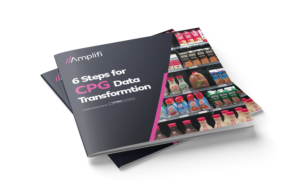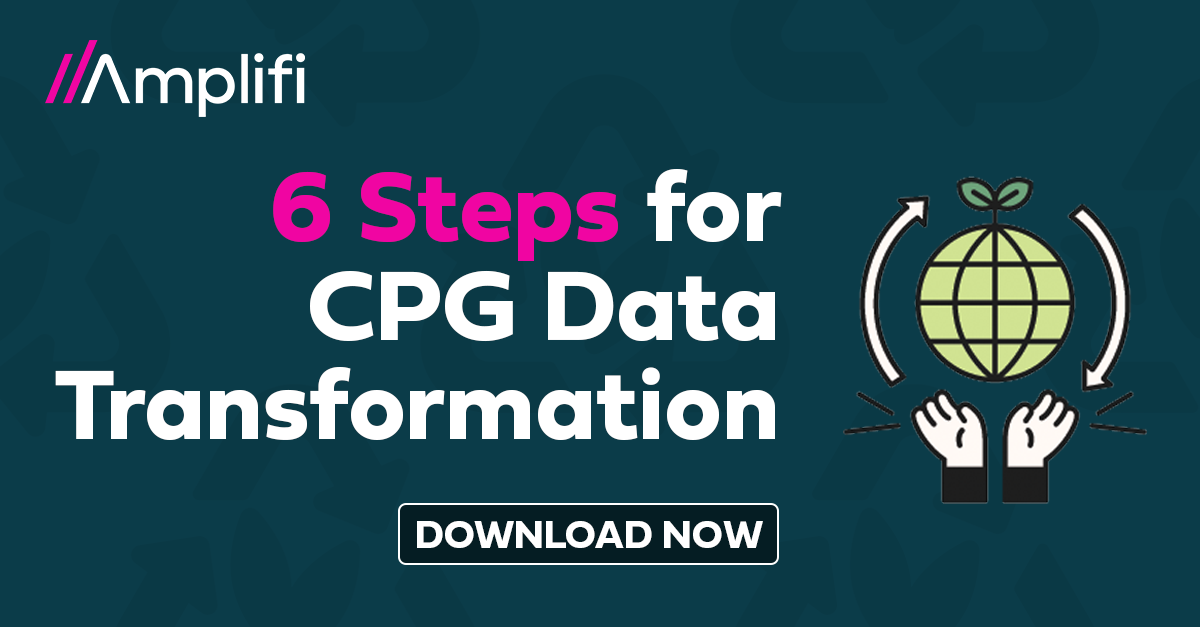Eco-friendly packaging. Fairtrade. Low carbon footprint. Consumer packaged goods (CPG) companies are in the spotlight when it comes to prioritizing and promoting sustainability.
Many CPG brands are taking steps to address the global climate crisis, such as creating sustainable packaged goods and exploring opportunities in ESG (environmental, social, and governance).
Sustainability is one of the many drivers of CPG data transformation. In this article, we’ll look at steps you can take to prepare for a future where sustainability plays a vital role in brand image, revenue growth, and risk management.
Embrace Sustainability as a CPG Advantage
The CPG industry is poised for a change. And that’s a good thing, given that the production of food and consumer goods accounts for 60% of greenhouse gas emissions, 80% of water usage, and 66% of tropical forest loss, according to Consumer Goods Technology.
There are also ESG and regulatory demands to consider from governments, investors, and third parties.
But perhaps the most compelling reason comes directly from the consumer’s wallet.
According to GWI, 61% of consumers say they’re likely to switch to a brand that’s more environmentally friendly. And a survey by PWC found that half of consumers now factor in sustainability before buying new products.
For an industry where packaging and production play a vital role, sustainability is the new competitive advantage. Every CPG company must determine which sustainability initiatives align with their business objectives, and how to apply data to measure and track their success.
Leverage Your Data to Support CPG Sustainability
Meeting sustainability goals requires collecting, managing, and analyzing vast amounts of data. This data is essential to promoting, analyzing, and measuring your sustainability goals, including areas like:
Responsible Sourcing: By analyzing suppliers’ environmental and social performance, companies can identify opportunities for improvement in their supply chains. This can help promote fair trade, use responsibly sourced materials, and reduce deforestation.
Environmental Impact: Companies can track their energy usage, greenhouse gas emissions, water usage, and carbon footprint to identify areas for improvement. This data can help you reach goals in renewable energy, offset plastic use, and use environmentally friendly packaging, like those made from organic, compostable, biodegradable, or recyclable materials.
Packaging: By analyzing data on packaging performance, CPG companies can identify opportunities to reduce material usage, decrease waste generation, and improve sustainability. They can also centralize and enrich data related to packaging product descriptions, certification logos, and sustainability claims.
Product Lifecycle: Companies can collect and analyze product performance data to identify improvement areas and optimize their operations for sustainability. This includes reducing waste generation and emissions throughout the product’s lifecycle.
Social Impact: By analyzing data on social performance, CPG companies can identify risks and opportunities for improvement in their labor practices and community engagement. They can promote fair trade, use ethically sourced materials, and drive community engagement initiatives.
By having well-managed data across all these areas, CPG companies can begin to benchmark and track their progress, set achievable goals, and make informed decisions about improving their sustainability practices.
Understand Your Sustainability Data Risks
Sustainability data is notoriously complex. The data comes from various sources, often spread across multiple systems and departments. The data must be shared with stakeholders like investors, trading partners, customers, rating agencies, regulators, and more.
Also, consider the cost and risk of inaccurate data is high. Even when unintentional, misrepresenting sustainability promises can result in fines, a loss in investor funding, and even legal action.
Perhaps the most significant risk is losing your customers’ trust. Greenwashing is a trend that can quickly damage your brand and cause lost sales.
To back up your sustainability claims, avoid fines, and eliminate greenwashing, you must have access to complete, accurate, and trustworthy data. Strive for a master data model that enables you to structure, enrich, and share your data to help promote your sustainability efforts.
You also need to be able to connect the dots for greater insights.
In a recent Forbes article, Adrian Carr, Forbes Technology Council Member and CEO of Stibo Systems, noted, “Sustainability data is more than just an attribute and a value — there’s context and a life span surrounding it.” That context relies on correlating sustainability data with other types of master data like product, location, and supplier—another tricky task.
Focus Your Sustainability Data Strategy on 4 Key Areas
When it comes to promoting your sustainability efforts, you need data to tell your story. You also need data to back it up. And finally, you need to analyze your efforts to ensure they make good sense for your business.
To address all these challenges, create a sustainability data strategy that addresses these four critical elements:
- Authenticity
- Traceability
- Metrics
- Analytics
Authenticity matters. GWI found that 60% of US consumers say authenticity is the most appealing quality of their favorite brands. Consumers want your sustainability initiatives to align with your core values, and they also want data to back up your claims.
Providing evidence of sustainability claims requires tracking data through the supply chain and product lifecycle. Tracking this data helps you deliver the transparency required by stakeholders like investors and regulators. It can also provide data-driven metrics—such as carbon emissions, water usage, or energy consumption—to show your environmental responsibility to your customers.
By collecting and analyzing sustainability data, CPGs can set measurable targets, monitor their progress, identify areas for improvement, and make data-driven decisions to address their ongoing environmental and social impact.
Need Help Structuring Your Data for Sustainability?
Adopting and evolving your sustainability practices is an impactful way to differentiate your brand and products from the competition.
But first, you’ll need to gain control over complex data — including a robust data management strategy that brings together what’s best for the environment, your customers, and your bottom line.
As Carr stated in Forbes, “If an organization has a sustainability strategy, they need to have a sustainability data management strategy.”
Sustainability is one of many important CPG data transformation goals. But no matter where you are in your journey, Amplifi is here to help.
Wondering where to start?
 Need help starting your data transformation to support sustainability? Or ramping up what you’re already doing? Our CPG guide shares six steps to implement a well-executed data program across your enterprise.
Need help starting your data transformation to support sustainability? Or ramping up what you’re already doing? Our CPG guide shares six steps to implement a well-executed data program across your enterprise.



